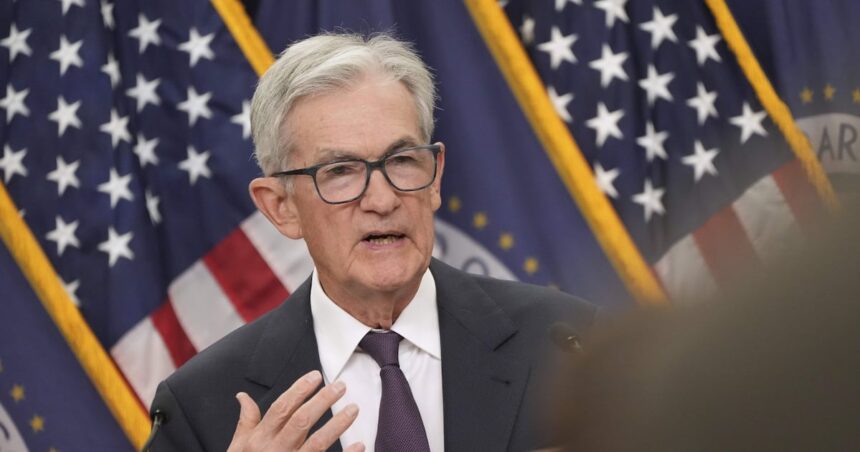The Federal Reserve’s cautious approach to monetary policy took center stage yesterday as Chair Jerome Powell signaled a deliberate pace for future interest rate reductions through 2025, despite mounting pressure from various economic sectors for more aggressive cuts.
“We’re not on a preset course,” Powell stated during his press conference following the Federal Open Market Committee meeting. “The economic data will determine the path forward, and we need compelling evidence that inflation is sustainably moving toward our 2% target before accelerating our approach.”
The Fed’s latest projections indicate just three quarter-point cuts for 2025, a notably conservative forecast compared to market expectations of five or more reductions. This cautious stance comes after yesterday’s modest quarter-point cut that brought the benchmark rate to 4.75-5.00%, the second reduction this year after September’s initial move.
Financial markets responded with immediate volatility—the S&P 500 dropping 0.8% before partially recovering, while Treasury yields climbed as investors recalibrated expectations. The dollar strengthened against major currencies as the reality of fewer rate cuts sank in.
Behind Powell’s measured tone lies a complex economic landscape. While inflation has cooled considerably from its 9.1% peak in 2022 to 2.5% currently, other indicators present a mixed picture. The labor market shows resilience with unemployment holding at 4.2%, yet manufacturing struggles persist and consumer spending patterns reveal growing caution.
“Powell is walking a tightrope between two risks,” explained Janet Marquez, chief economist at Western Pacific Partners. “Move too aggressively and inflation could reignite; move too slowly and economic growth might stall. The Fed clearly fears the former more than the latter right now.”
The housing sector, particularly sensitive to interest rate policy, continues to face headwinds. Despite the recent modest rate reductions, mortgage rates remain near 6.5%—still historically high—keeping many potential homebuyers sidelined and new construction below pre-pandemic levels.
“We’re seeing the housing market effects of even these small rate adjustments,” Powell acknowledged. “But sustainable recovery requires patience rather than dramatic policy shifts that could create new imbalances.”
For businesses, especially in capital-intensive industries, the Fed’s gradual approach means financing costs will remain elevated through most of 2025. This outlook has prompted some corporations to delay expansion plans or seek alternative financing arrangements.
Global factors further complicate the Fed’s calculus. Recent currency interventions by Japan, ongoing European economic weakness, and unpredictable Chinese recovery patterns all influence U.S. monetary policy decisions. Powell specifically noted that “international developments factor into our risk assessments” while maintaining that domestic conditions remain the primary focus.
Looking beyond 2025, the Fed’s longer-term projections suggest a “neutral” rate around 3.5%—higher than pre-pandemic levels—indicating a new normal for borrowing costs even after this tightening cycle concludes.
As economic uncertainty persists, Powell’s cautious approach reflects the lasting impact of pandemic-era policy lessons. The Fed appears determined to avoid repeating past mistakes of premature policy shifts, even if that means disappointing those hoping for rapid relief from higher rates.
Will this measured approach prove sufficient to navigate the complex economic challenges ahead, or will evolving conditions force the Fed to adapt its carefully constructed roadmap? The answer likely lies in the economic data that Powell and his colleagues will be watching with extraordinary scrutiny in the months ahead.
For more financial news and analysis, visit CO24 Business.










